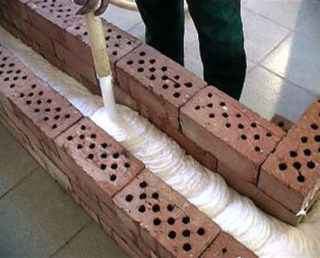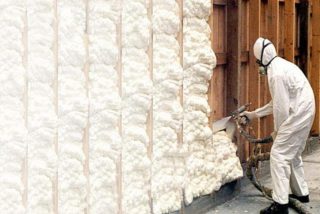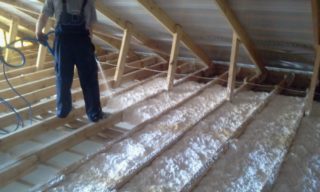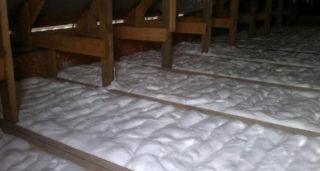Proper warming of the house plays a decisive role in its energy conservation. The most common heat insulators in Russia, Ukraine and Belarus are expanded polystyrene and mineral wool. Relatively recently, domestic consumers met with a new material that has unique thermal properties - penoizol. It is a cellular polymer, which is used to insulate apartment buildings and private houses, garages and summer cottages.
The main characteristics of penoizol
Before giving preference to warming houses with penoizol, it is important to familiarize yourself with its main characteristics.
Heat conductivity
This type of insulation has a very low thermal conductivity. The coefficient ranges from 0.031-0.041 watts per meter per Kelvin. The house will become much warmer, even if you lay a ten-centimeter layer of insulation. This will have a positive effect on the heating charge. Over the next few years, all expenses will be fully compensated.
The foam insulation layer can be from a few centimeters to one meter, the decision is made by the owner of the living space.
Fire resistance
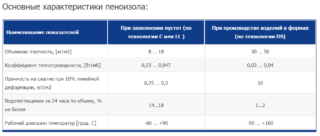 Penoizol in terms of combustibility belongs to the G-1 group, in terms of flammability - B-2. This means that unlike many other polymers, this substance does not burn and does not even melt when exposed to fire. By the degree of smoke, the material belongs to the D-1 group, toxicity - T-1. You can apply this kind of insulation in a wide temperature range: from -60 to +80 degrees Celsius.
Penoizol in terms of combustibility belongs to the G-1 group, in terms of flammability - B-2. This means that unlike many other polymers, this substance does not burn and does not even melt when exposed to fire. By the degree of smoke, the material belongs to the D-1 group, toxicity - T-1. You can apply this kind of insulation in a wide temperature range: from -60 to +80 degrees Celsius.
Chemical and biological resistance
Most heat insulators are susceptible to mold attack; in a humid environment, materials are covered with a dense black coating. Penoizol is not affected by any microorganisms. The substance does not react with chemically aggressive environment and organic solvents. Liquid material can be used for insulation of basements and attics.
Moisture absorbing ability
Penoizol absorbs moisture well, but then gives it away without any consequences. This is a great advantage compared to mineral wool, in which, after getting wet and drying, the quality deteriorates significantly.
It can absorb no more than 1/5 of moisture, subsequently evaporates it. In rooms where the material is used, the walls will not get wet, but a ventilation gap must be provided. If you neglect this rule, the development of mold and fungus can not be avoided.
The material is hygroscopic, which allows the walls to breathe freely. This favorably affects the life of households and the condition of the house - the walls are slowly breaking down. During the day, the insulation is able to absorb 10 to 20 percent of the moisture in the room. He later vaporizes it without consequences.
Strength indicators
The materials included in the foam group are technologically advanced due to their softness. They fit snugly to any building structure, even with a large number of irregularities. As a result, voids, gaps, and the insulating level “at height” do not form.
Durability
Through experiments carried out in laboratory conditions, it was possible to find out that the insulation applied to the vertical type structures can last 30-50 years with the condition that when applied, all the technical rules for use were observed.
Scope of a heater
Liquid penoizol is widely used in filling:
- spaces between OSB sheets and concrete flooring;
- into the airspace that formed between two load-bearing walls;
- between the wall and the upholstery, for example, profiled sheet, lining, siding and a large number of other materials;
- between the rafter system and the roofing;
- in a frame on which false walls are assembled from GKL sheets or partitions.
The scope of penoizol is quite extensive, due to this a large number of advantages of the material.
Advantages and disadvantages
Insulation of walls with penoizol has gained popularity for a reason. Indisputable advantages:
- high technical characteristics - the insulation layer with a thickness of 45 mm is already capable of preventing heat loss;
- vapor permeability, due to which condensation does not form on the insulated walls, which is very important for wooden structures;
- resistance to dynamic loads - the structure of the material is elastic, which allows it to recover to its original state even after strong compression;
- multifunctionality - insulation can be used for any type of structures, regardless of their geometric shapes;
- neutrality to external influences - the insulation quality is not affected by heavy rains or winds, sharp temperature drops;
- high adhesion rates - thanks to the liquid structure, the thermal insulation adheres to all types of structures, fills all voids.
Despite the large number of advantages, do not forget about the disadvantages. The weaknesses of the insulation include:
- low tensile strength indicators - regardless of the elastic structure, the insulation is easily pierced and torn, which negatively affects thermal insulation in the future;
- shrinkage - after pouring and solidification, the volume of material is reduced by 0.1-0.5%;
- dependence on temperature conditions during operation - work with the material can only be done if the air temperature is above +5 degrees;
- moisture absorption - if it is necessary to insulate the foundation, this property should be regarded as a disadvantage.
The disadvantages of insulation with penoizol include high cost. The material itself is no more expensive than its analogues - mineral wool and expanded polystyrene, but to work with it you need special equipment, which is rarely seen with private developers. For installation work, it is required to rent units, which makes the procedure much more expensive.
